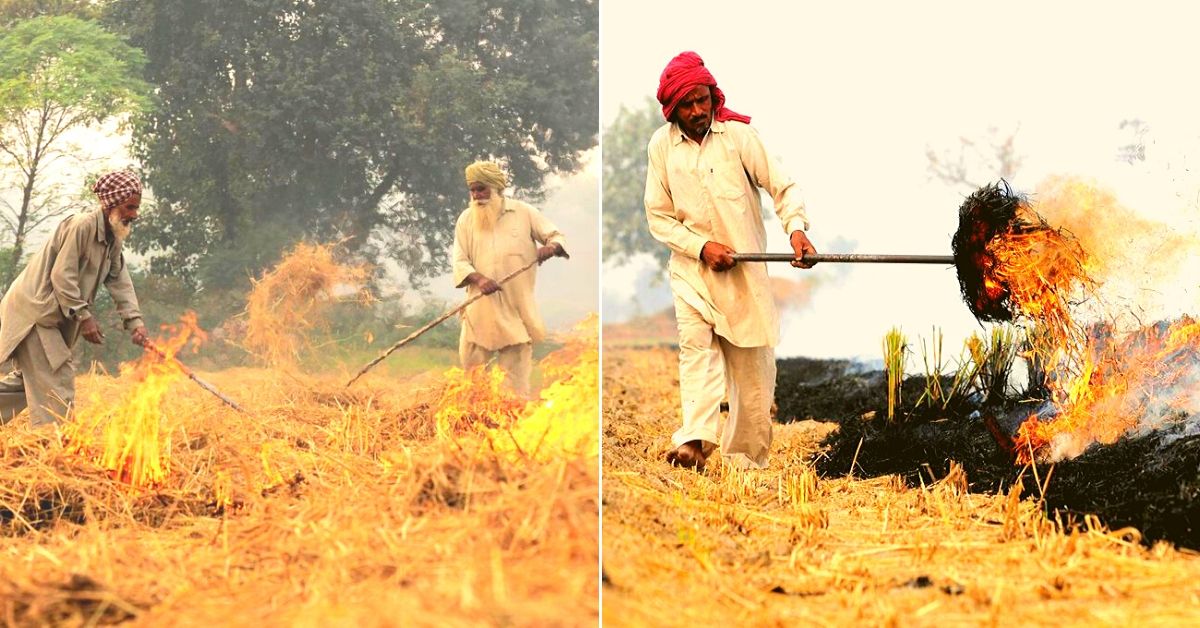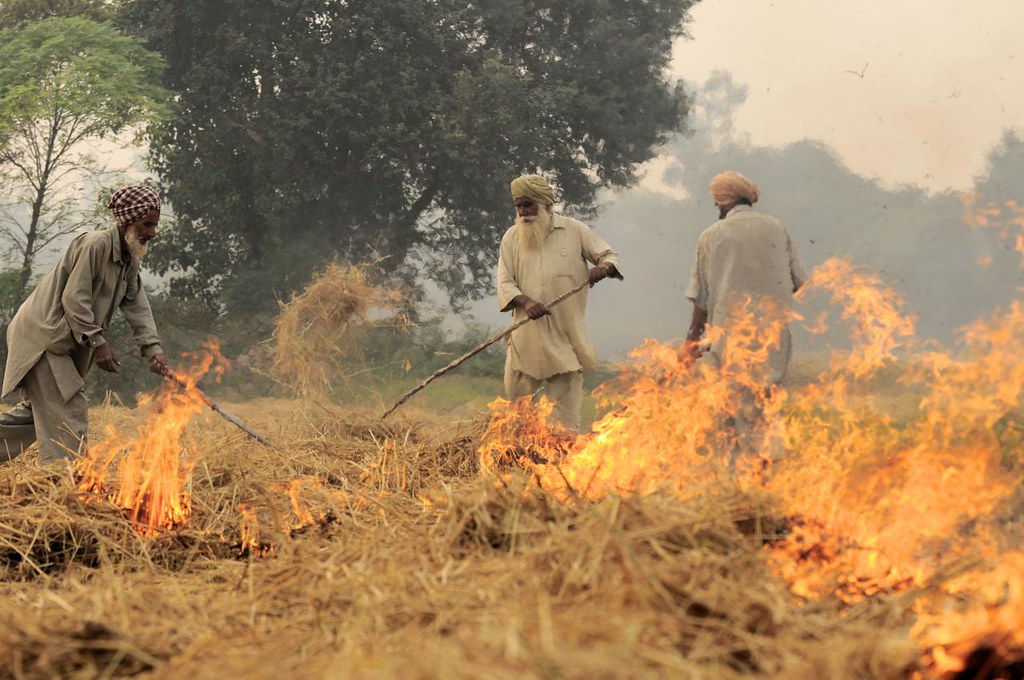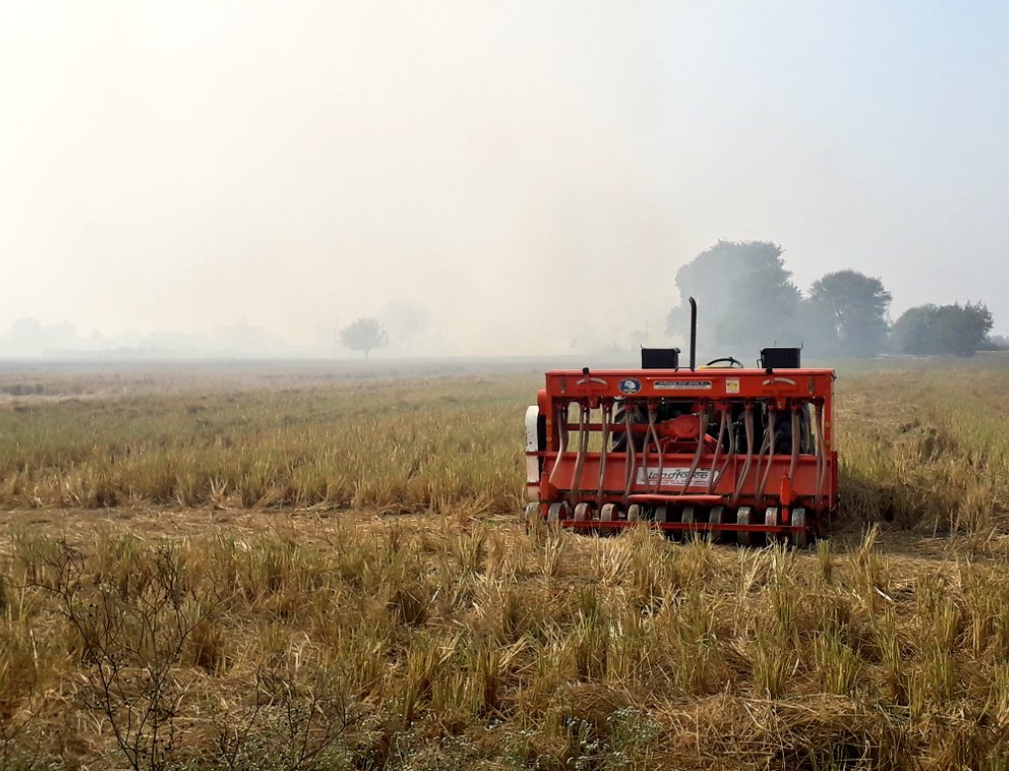How Do You Tackle Crop Burning? Here Are 5 Solutions That Can Work!
What does groundwater have to do with stubble burning in Punjab? As it turns out, a lot. Which is why we need solutions that help farmers. #DelhiAirEmergency #DelhiSmog

Every winter, vast swathes of North India, particularly the Delhi-NCR region, get engulfed under a cloud of poisonous smog.
Besides the usual suspects, one singular phenomenon which has a massive bearing on the devastating air quality in the Delhi-NCR region is the decision of farmers, especially in Punjab and Haryana, to burn their fields following the rice harvest.
Keep yourself safe from respiratory infections with this ultrasoft, lightweight and comfortable mask which keeps dust, germs and airborne contaminants out!
According to an August 2019 study titled ‘Fields on fire: Alternatives to crop residue burning in India,’ published in the journal Science, farmers in northwest India burn around 23 million tonnes of rice straw so that they can clear the land quickly for the sowing of wheat.
The effects are devastating. Air quality monitoring stations in Delhi-NCR registered above 999 on the Air Quality Index, which is way beyond emergency levels. Schools and offices were forced are forced to shut down for days.
As per a report in Business Standard, officials at the Central Pollution Control Board last year stated that stubble-burning in Punjab and Haryana contributed to 20-30% of the capital’s overall air-pollution for that period.
While it’s important to note that crop burning only exacerbates the air quality crisis for 15 days to a month (last week of October and the first week of November), and isn’t a core source of air pollution, we also urgently need definitive solutions.

Here are some of them:
1) Waste Decomposer
Scientists at the National Centre for Organic Farming have developed a ‘Waste Decomposer’ solution concocted with effective microorganisms that propel in-situ composting of the crop residue.
“This is done by spraying the preparation on the post-harvest stalks of crop plants and leaving it for a month. The waste decomposer comes in a small bottle that is distributed to farmers at a measly price of ₹20. According to the centre officials, the solution can decompose over 10,000 metric tons of biowaste in 30 days. The same can also be used in foliar spray and via drip irrigation,” says this TBI report.
2) Converting Crop Stubble Into Animal Feed, Manure, Cardboard
In a recent tweet, eminent agricultural scientist MS Swaminathan said, “In South India, stubble is not burnt as there’s economic value as animal feed. For years I pointed out many commercial uses of rice straw. We should adopt a do-ecology approach with farmers to convert rice stubble into income rather than making them agents of eco-disaster.”
You can also upcycle stubble to make products including paper, cardboard and animal feed. In Palla village outside Delhi, for example, a non-profit called the Nandi Foundation recently shared a tweet of its initiative where 800 MT of paddy residue was purchased from farmers to turn it into manure.
?Prof.@msswaminathan This is exactly what @naandi_india has been doing! The pictures below are from our #UrbanFarmsCo farmers cluster in Palla village of #Delhi where purchased 800MT of paddy residue from farmers to prevent them from burning! We will now compost it as manure! https://t.co/DgmBCEaZE5 pic.twitter.com/St1fOaSNHj
— Manoj Kumar (@manoj_naandi) November 4, 2019
3) Happy Seeder
Instead of burning the stubble, a tractor-mounted machine called the Happy Seeder “cuts and lifts rice straw, sows wheat into the bare soil, and deposits the straw over the sown area as mulch,” says this Ideas For India article.
According to a recent study published in the journal Science, it will “eliminate air pollution by crop burning and reduce greenhouse gas emissions (GHG) from on-farm activities by more than 78% relative to all burning options.”
Having said that, there are concerns surrounding the machine’s costs and maintenance that need to be addressed.
4) Converting Crop Stubble to Biodegradable Cutlery
Kriya Labs, an IIT-Delhi startup, has developed a machine that can convert the leftover rice straw into pulp, and that is further moulded to produce biodegradable cutlery.
“The straw is treated with a natural solvent to separate the organic polymer from cellulose leading to the formation of pulp. The semi-solid substance is then dried and moulded into biodegradable cups, plates and jars. This entire operation is eco-friendly and sustainable,” says Kanika Prajapat, the Chief Technology Officer, speaking to YourStory.
Kriya claim that in a day they can generate 4-5 tonnes of rice pulp with residue generated by 800 acres of land every harvest season.
5) Incentivising Farmers to Grow Crops That Don’t Guzzle Water
The problem of crop burning cannot rest entirely on farmers. For example, in Punjab, this practice has a lot to do with the groundwater crisis, and this is a well-documented fact.
Since paddy is a water-intensive crop, why not incentivise farmers to make the shift towards millets. Besides using very little water, millets are suitable for the land available in Punjab and are highly nutritious.
But how do you incentivise farmers to make that shift from a money-earner like paddy?
“Delhi can prevent its annual health catastrophe by creating markets for these nutritious millets. What if Punjab and Haryana included millets in their mid-day meals in schools? Apart from positive health outcomes for children, this could also be a fix for an earlier, polluting policy flaw. Delhi could offer to work with Punjab to identify how much millet supply it can procure and consume next year, and pilot a downstream project in select schools. The lessons should be incorporated to scale up and feed children with millets more frequently,” writes Bharati Chaturvedi for Hindustan Times.
Between elected representatives bickering among themselves in Delhi, Punjab and Haryana, and the Supreme Court’s sermons to ordinary farmers, the discourse surrounding crop burning is rife with hopelessness.
However, there are real solutions that can work, and it’s high time they are utilised.
Also Read: Odd/Even Not Enough: What The Govt Needs to Do to Reverse the #DelhiAirEmergency
(Edited by Gayatri Mishra)
Like this story? Or have something to share? Write to us: [email protected], or connect with us on Facebook and Twitter.
This story made me
- 97
- 121
- 89
- 167
Tell Us More
We bring stories straight from the heart of India, to inspire millions and create a wave of impact. Our positive movement is growing bigger everyday, and we would love for you to join it.
Please contribute whatever you can, every little penny helps our team in bringing you more stories that support dreams and spread hope.



















